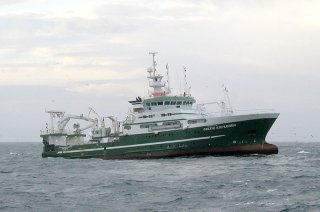
Does bottom trawling enhance fish production by manipulating the seafloor ecosystem?
Fishermen have long argued that positive effects of trawling on fish growth exist. But can we theoretically explain this claim? How does bottom trawling enhance fish production?
To understand the mechanisms of possible enhancement of fish production by fishing, BENTHIS modelled the effects of fishing on the seabed ecosystem. This study provides a theoretical basis for such claims and shows for which type of seafloor ecosystems it can occur. These results imply that understanding the seabed ecosystem is key for successful fishery management.
The BENTHIS modelling work revealed that the much-criticized side-effects of bottom trawling can indeed stimulate the growth of the fish it targets. This is how it works: trawl gears damage the bottom fauna and alter the seafloor food web. Some benthic organisms are very sensitive to trawling, others less so. Many of the species in the benthos compete for the same food, and when the seafloor is trawled, the species which are not so sensitive can use more of the available food that is left by their more sensitive competitors. If these less sensitive species are a particularly good food source for fish, fish growth may benefit from trawling. In other cases, trawling will only induce extra mortality on all benthos and this will decrease the food for fish.
Whether this positive effect applies to the soft bottom habitats used by flatfish fishers will be the focus of future work in BENTHIS.